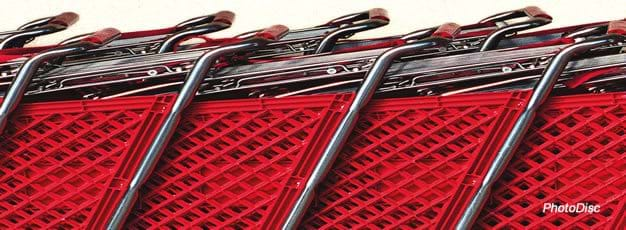How Low-Income Households Economize on Groceries

Food purchase decisions entail tradeoffs among taste, preference, and quality factors—real or perceived—to meet spending constraints. This is especially true for the poor. Low-income shoppers can stretch their food dollars in a number of ways: shopping in discount foodstores, buying and eating less food than higher income shoppers, or buying low-priced (and possibly lower quality) food products. Nutrition educators and those who manage food assistance programs would benefit from knowing just how this economizing behavior occurs, and at what cost to low-income consumers.
ERS researchers investigated the food purchases of low-income households in four product categories: breakfast cereals, cheese, meat/poultry, and fruits/vegetables. They analyzed average annual quantities and expenditures using product descriptions, brand names, and package sizes; they also took into account whether items were on sale or purchased with a coupon. Such detailed data allowed ERS to calculate the average unit cost (per ounce or per pound) for food items bought by shoppers of different income levels.
Comparisons across income groups show that the poor economized on food by buying more non-UPC coded random-weight foods (such as block cheese or loose apples) on sale, a greater proportion of private-label (store-brand) products, and less expensive varieties of meats, fruits, and vegetables. For example, low-income households bought just 3.3 percent fewer pounds of fruits and vegetables per person than high-income households, but spent 13 percent less for those products over the course of the year.
These economizing practices allowed the poor to spend 4.8 percent less for food products from the four categories. However, the economizing practices of low-income food shoppers may be hampered by the types of stores they patronize. For example, private-label products and volume-discounted packages are less available in small grocery stores, which are sometimes the only foodstores easily accessible to the poor. In addition, food assistance programs, such as food stamps and WIC, enhance low-income households’ food purchasing power. Were it not for these factors, differences in purchase patterns between low- and higher income shoppers would likely have been even larger.
Exploring Food Purchase Behavior of Low-Income Households How Do They Economize?, Agriculture Information Bulletin No. 747-07, by Ephraim S. Leibtag and Phil R. Kaufman, USDA, Economic Research Service, June 2003


